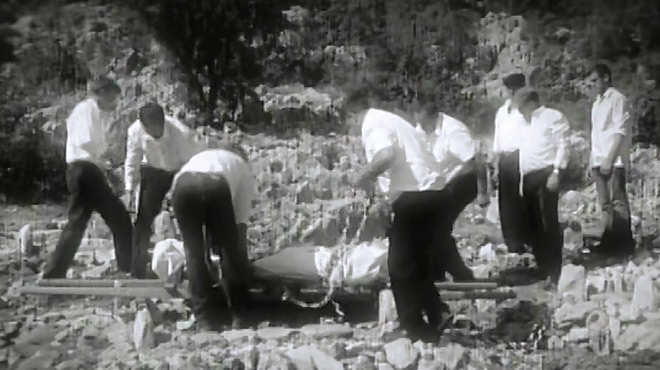Ritual

The stock-raising way of life in the Velebit, from the first lower-lying settlements (near the sea) to the simple lodges in the mountains, caused a special relationship to death. This was reflected in three cults: the cult of the ancestors, the cult of the soul, and the cult of the sun. All three were symbolically united in the phenomenon of the mirilo.
When the member of a family or clan died in any of the mountain upland settlements, the rules of the funerary ritual were always the same: after a one day or one night vigil, the deceased was wrapped in a winding sheet (shroud), placed on stretchers that served only for this purpose, and was tightly bound by rope so as not to slide when being carried down steep slopes. The feet were carried ahead, and the head behind, with the face towards the “rising sun”. This west-east orientation had not merely a practical, but also a symbolic significance – the last leave-taking of the deceased with the sun (the cult of the sun). Four bearers carried the deceased on their shoulders, changing of with another four, as the deceased could not be placed on the ground except at the specified place alongside the path – at the clan mirilo tombstones. At that point they would carry out the ritual measurement (mirenje) of the deceased with two stones. One was placed at the head, and the other by the feet. Through this process, his measurement was taken (his “mira”) and this is where the term MIRILO comes from (literally: measurement marker). During this same process, the soul separated from the body and was incorporated into the stone monument (the cult of the soul). The ritual took about fifteen minutes, after which the funerary procession continued towards the cemetery on the sea coast, where the deceased was buried “among the plants”, where the body will turn into dust, because of which the grave will loose all significance. Cemeteries as such held no importance, and would not be visited until the next burial. In contrast to this, the mirilo would become a holy place and would be a marker, a tombstone for the deceased with its form and ornamentation. The soul rests in it peacefully (cared for, satisfied), so that it will not wander and disturb other family and clan members. In the measured length of the body and the peacefulness of the spirit, the mirilo symbolically preserves a permanent memory of the deceased (cult of the deceased ancestor). As a consecrated place marking the last memorial and resting place of the deceased, at the same time it becomes the permanent resting place of the soul (the grave of the soul).